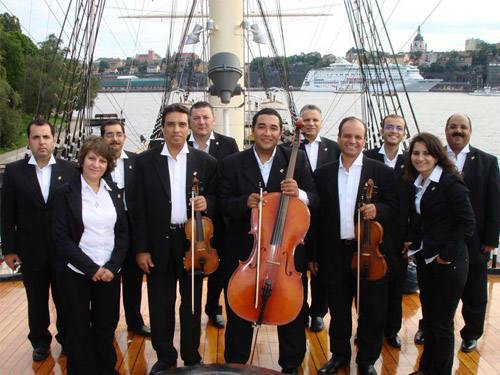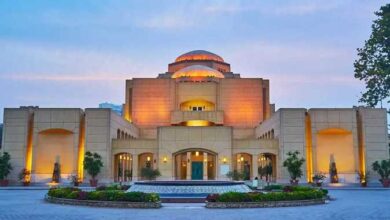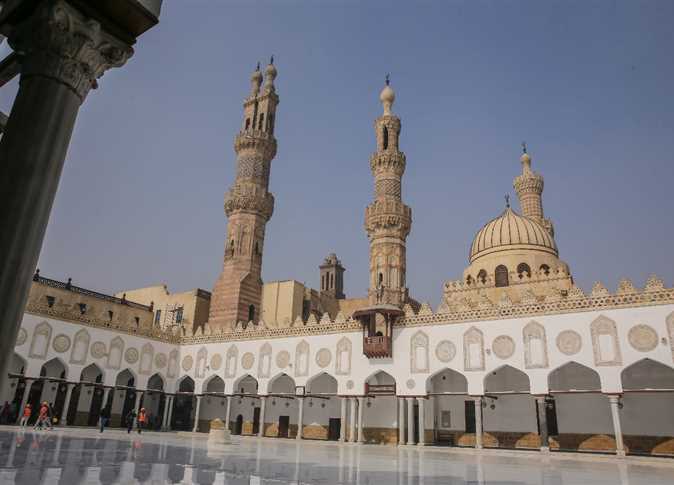
Listening to Quranic verses and prayers playing on the radio while riding a cab is common in Cairo. But recently, Coptic psalms are likely to catch your ears as well.
The Coptic Orthodox Church has closely guarded Coptic hymns within its walls for centuries now. A non-Coptic layman would only be exposed to the often-melancholic tunes for a few minutes on a Coptic holiday, when a state official would appear on TV on behalf of the president to pay his respects to Copts.
Mounting sectarian tensions recently seem to have helped promote the music, however, with individuals bringing some of the oldest musical tunes in history into public space.
Talking about Coptic music is in fact a conversation about the pharaonic musical heritage formulated over the millennia, according to composer George Kyrillos, a deacon at the Virgin Mary Church in Maadi and the first person to musically document Coptic hymns successfully.
“Coptic music is part of the world’s cultural heritage, just like the [Giza] pyramids,” says Kyrillos.
The origin of the “Calvary” hymn sung on Good Friday every year, for instance, is a pharaonic melody that priests played as they buried the ancient Egyptian kings. Early Copts, familiar with the tune, continued using it on Good Friday, when Jesus Christ’s crucifixion and burial is remembered.
Similarly, the Coptic Orthodox Church inherited most pharaonic prayer hymns with the introduction of Christianity into Egypt, despite the pagan origins of the original tunes, according to Christian faith. They were passed on sonically from one Coptic generation to the next.
Anton Ibrahim Ayyad, a senior deacon at the Orthodox Patriarchate and a professor of Coptic hymns at the Cairo Seminary, says the music and hymns were part of the prayer rituals of ancient Egyptians.
“When Christianity came to Egypt, people replaced the pharaonic text with a Coptic one. Ever since, pharaonic music became part of the rituals and prayers at the Egyptian church.”
The church has managed to maintain the hymns and lyrics as they are by using a range of strict rules for selecting reciters. It is rarely possible for a layperson to learn Coptic hymns and prayers due to their difficulty and length. Some are complex and are more than an hour long.
Ayyad explains that the title of “teacher” is only bestowed upon priests and fathers who learn the prayers and teach them to others. A common characteristic of these teachers, who have high musical sensibility and memory, is being visually impaired — it is commonly believed that they enjoy sharper hearing and are hence more capable of differentiating between the different tunes.
Ironically the reasons that kept the music the same for 2,000 years are the same ones behind its nonproliferation. Coptic music only started spreading outside the Egyptian church during the last two decades, when music sharing and portable music equipment such as cassette players and MP3 players became more popular.
There have been just three attempts to document it, all undertaken during the last 30 years.
In the mid-1970s, the church decided to record all the tunes on cassettes and kept the original copies in its library, as well as duplicates in the American University in Cairo library and the Library of Congress in the US. The second attempt at documentation was in 1998 and resulted in a book.
But the copies were withdrawn from the market shortly afterwards, when the church announced it included incorrect musical notes. Researchers and ethnomusicologists Martha Roy, an American, and Margit Toth, a Hungarian, documented the music in “The Complete Orthodox Liturgy of St. Basil with Complete Musical Transcription.” The hymns, however, were documented based on western musical notes, producing sounds that were different from the original eastern tunes.
The Coptic Orthodox Church in Egypt also resisted attempts at developing the music as it is seen as part of prayers, giving it a sanctity that prevents the idea of renewal or development, unlike the Ethiopian and Byzantine churches. The conservation of Coptic tunes has become synonymous with conserving the prayers.
Coptic tunes are rarely played with musical instruments. Psalmists hum them, maintaining the first rituals of prayer from the Roman era, when Christians were persecuted. The Coptic Orthodox Church follows this tradition today, as the early fathers preferred to minimize the use of musical instruments, believing the voices of psalmists were the perfect communion to God, Ayyad says.
Occasionally, the triangle bell is used as a percussion instrument in cheerful tunes sung on Easter to express the church’s joy at the resurrection of Christ.
Ideological and historical reasons aside, Kyrillos cites purely artistic reasons for the church’s refusal to use musical instruments like other churches. First, Coptic melodies are “strong enough, which makes them do without musical instruments.”
Also, the Coptic language is the key reason behind the melodic richness of these hymns. Kyrillos explains that the Coptic language relies on sonorous letters (three times as many as the Arabic language), relying more in their pronunciation on the vocal cords, mouth and nose. This makes the prose richer and more diverse.
For this reason, Kyrillos confirms that attempts at Arabizing the hymns have been mostly unsuccessful, as Arabic words rely on consonants and pauses more than their Coptic equivalents.
Kyrillos also thinks discussions about renewing Coptic music are unfair to the Coptic Orthodox Church, which is traditional and conservative by nature, only seeking minimal change. Still, he also rejects the idea that Coptic music has come to a standstill because of such strict rules.
“On the artistic and musical levels, the tunes are mature and complete through [continuous] performance over the years,” says Kyrillos. “It no longer needs to be renewed.”
Here he relies on his academic background as a Coptic music professor, adding that the desire to renew is often related to fears of stagnation and boredom, or that it no longer copes with modernity. But Coptic music is not like that.
The secret behind the spirituality and “dignity” that Coptic music evokes is in distancing itself from tunes in general, especially fast ones. As musical rhythms become faster, they speak more to the body, inspiring listeners to clap and sway with its beats, he says.
Kyrillos adds that playing Coptic music outside of the church mass relies on musical instruments that are more rhythmic than percussive, to maintain the songs’ dignified character.
Coptic music features a diversity that makes it a source of inspiration rather than something that needs renewal, Kyrillos says, adding that it cannot be influenced by new music genres.
He points out that most Arab music pioneers, from Sayyed Darwish to Mohamed Abdel Wahab, were influenced by Coptic music.
“They took musical notes and built on them complete tunes,” he says.
This piece was originally published in Egypt Independent's weekly print edition.




